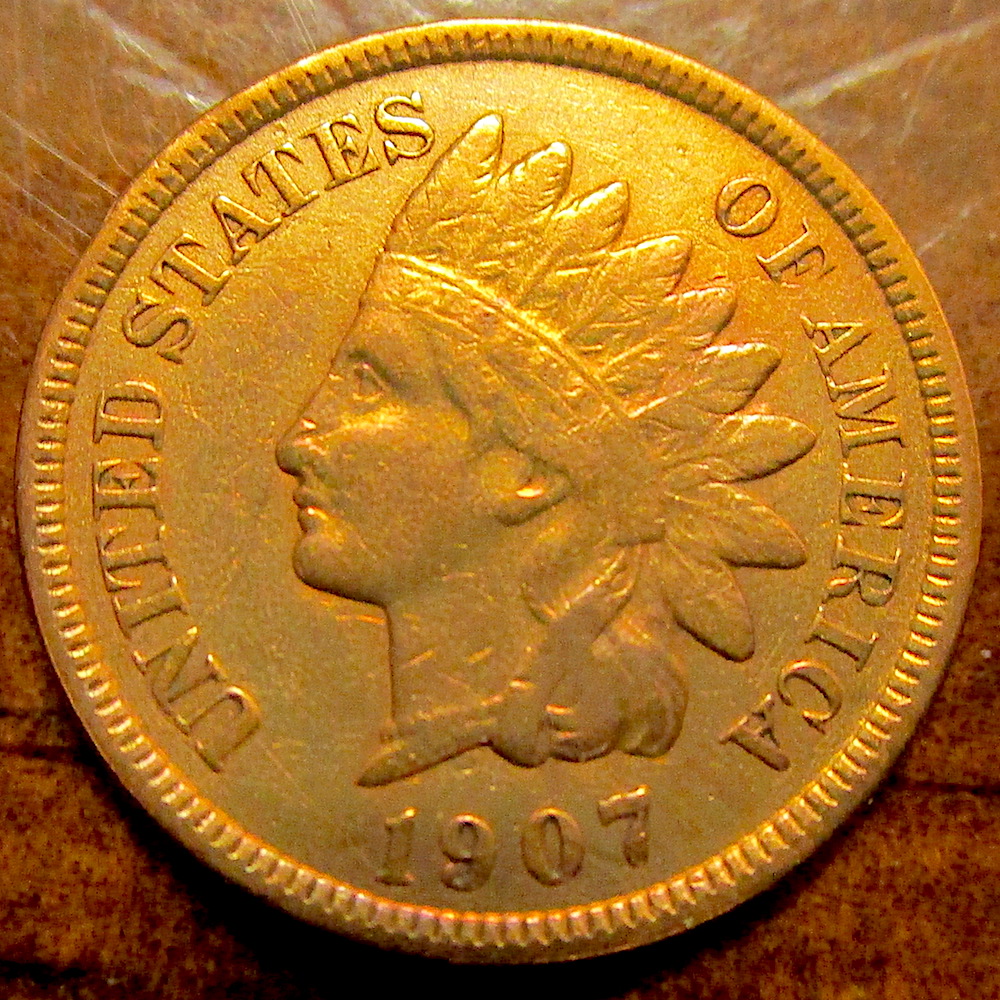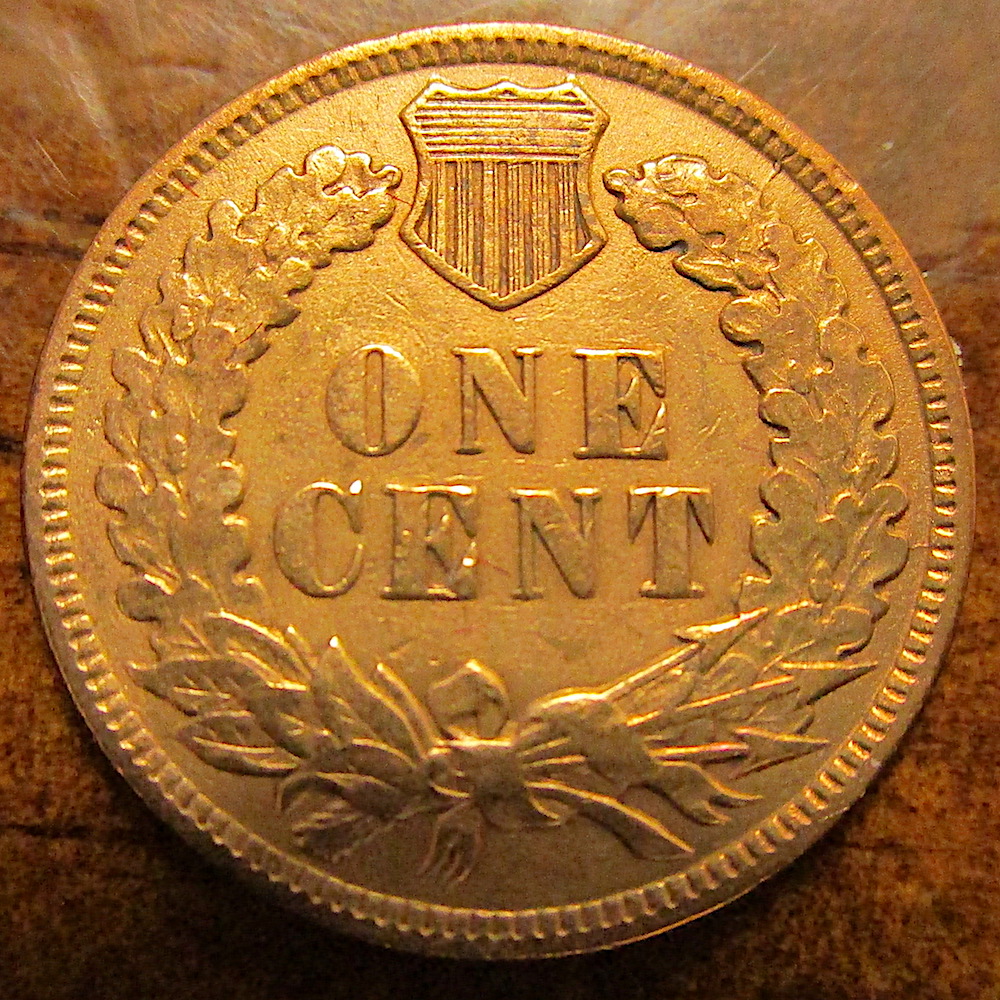Jun 12, 2022 | cents, coins, news
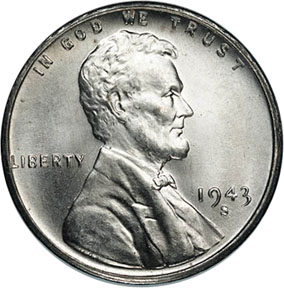
1943-S Steel Cent
Copper was a crucial element in making bullets for the war efforts. With the production of war materials increasing, congress and the U.S. Mint thought that striking the cent using another metal would help. After testing different materials in 1942, the U.S. Mint selected a zinc-coated steel planchet. In 1943, the U.S. Mint produced 1,093,838,670 steel cents between the three mints.
The coins were not well received by the public. Their size and lighter weight caused many people to confuse the steel cent with the dime. The zinc coating would wear as the coin circulated, allowing rust to form on the steel.
With over 1 billion coins struck, there are plenty of opportunities to collect steel cents. At the time, some people saved rolls, and others put the coins aside because they did not like to use them. They can be purchased online or from many dealers.
When looking for steel cents for a collection, look for a coin that continues to show its zinc color. The zinc will be a semi-bright silvery color that does not have a very shiny look. Grey-looking and dark grey coins have been handled and should be less expensive.
Nice examples of Steel Cents are not expensive. With over 680 million struck in Philadelphia, uncirculated examples of those coins cost $2.50 – $3.00. There were over 210 million struck in Denver, uncirculated 1943-D steel cents will sell for $3.25 – $4.00. There were fewer steel cents struck in San Francisco. Over 190 million struck, uncirculated 1943-S coins cost $5.00 – 6.50.
When buying coins for your collection, be careful with coins that look shinier than others. These coins may be reprocessed Steel Cents. Reprocessed steel cents are real coins but have a new coating of polished zinc. While they are pretty coins, numismatists consider these coins damaged and advise not collecting them if you are looking for value.
Rather than continuing to use the steel planchet, the U.S. Mint used copper recovered from the spent shell casing used for ammunition. The shell casing came from the training fields in the United States and not from the battlefields.
In 1944 and 1945, spent ammunition provided the copper used to strike Lincoln Cents. These coins are known as shotgun case cents and are darker than other copper coins because the smelting process could not remove all of the impurities from the ammunition.
There are famous 1943 Lincoln Cents struck on copper planchets, and 1944 cents struck on steel. These are rare coins and not as readily available.
The 1943 Steel Cent is the only circulating coin ever produced by the United States Mint that does not contain copper. Collecting a complete three-coin set adds a historic coin to your collection at an affordable price.
And now the news…

June 6, 2022
Prague, Czech Republic – A rare ten-ducat coin dating from the 17th century sold for more than 10 million Czech crowns (about €4 million) at an auction held in Prague on Saturday. The ten-ducat coin was minted in Prague during the reign of Frederick the Great in the early 17th century.

→ Read more at
kafkadesk.org

June 7, 2022
Hyderabad: Security Printing and Minting Corporation of India Limited (SPMCIL) is organising Azadi Ka Amrit Mahotsav celebrations from June 6 to 13 in all its units. As a part of the celebrations, India Government Mint, Hyderabad, is inaugurating the coin museum at Saifabad Mint on June 7.

→ Read more at
thehansindia.com

June 7, 2022
Centuries-old shipwrecks complete with gold coin treasure have been discovered off Colombia. According to officials, Colombian naval officials conducting underwater monitoring of the long-sunken San Jose galleon discovered two other historical shipwrecks nearby.

→ Read more at
presstv.ir

June 8, 2022
A SELLER on eBay recently had some luck with his coin collection – selling it for nearly $3,500. The collection featured Lincoln steel pennies that mostly bared the 1943 dates, according to the seller.

→ Read more at
the-sun.com

June 10, 2022
The U.S. Mint released the first quarters featuring Wilma Mankiller, who was the first woman named Chief of the Cherokee Nation.

→ Read more at
poncacitynow.com
Sep 20, 2021 | cash, cents, coins, news
Yes, I’m a day late. At least I’m not a dollar short!
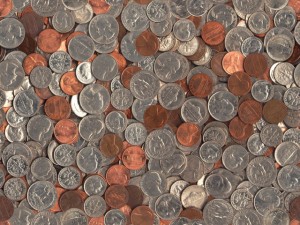 It is not a surprise to economic and market watchers that there is a perceived coin shortage. The problem is not just in the United States, but worldwide central banks are trying to fix their circulation issues.
It is not a surprise to economic and market watchers that there is a perceived coin shortage. The problem is not just in the United States, but worldwide central banks are trying to fix their circulation issues.
Over the last three months, the Reserve Bank of India (RBI) has been trying different tactics to get money to circulate. In addition to striking more coins, they promote new designs and a program for citizens to redeem old coins for the newly issued coins. It has a moderating effect on the COVID crisis at high levels in the country.
India has also been dealing with rumors one type of circulating coin has been counterfeited or been withdrawn and not legal tender. However, the RBI has insisted that the coins are legal tender but continue to promote them with the redesign.
The Royal Mint has stepped up the production of 1 penny coin for circulation. Physical money is used more in the UK than electronic transactions, especially outside of the cities. Although some feel the penny has been overproduced and would rather see the 2 pence coin used, the increase in the number of transactions since the lifting of COVID restrictions created the demand.
The United States continues to see shortages. Most of the reports are coming from outside of the major metropolitan areas. Most are looking for one-cent coins. Experts are blaming accelerated consumer spending in areas where cash payments are more prevalent. More populated urban regions are seeing more electronic transactions than cash.
Let’s keep the economy moving. Spend those coins! (not the ones you collect)
And now the news…

September 14, 2021
Bankers thought the nationwide coin shortage was over, as the U.S. economy reopened and previously housebound consumers were able to unload more of their change. But a combination of factors — including government stimulus payments, accelerated consumer spending and the threat of the COVID-19 delta variant — has stymied progress and forced retailers to resort again to asking shoppers for exact change.

→ Read more at
americanbanker.com

September 14, 2021
Croatian National Bank (HNB) Governor Boris Vujčić said on Monday after meeting with European Commission Vice President Valdis Dombrovskis that a test production of euro coins with Croatian national motifs should begin by the end of this year, with possibly about two million coins being minted.

→ Read more at
croatiaweek.com

September 15, 2021
LAS CRUCES – The Las Cruces Police Department received two reports of movie prop money that was passed as legal tender over the weekend, a news release on Monday stated. In the news release police stated movie prop money can look like actual currency but, in most instances, does not have the same texture.

→ Read more at
lcsun-news.com

September 15, 2021
A very rare large gold coin from the reign of Charles I is expected to fetch £50,000 when it is sold at auction.

→ Read more at
newschainonline.com

September 15, 2021
A huge hoard of Iron Age gold artifacts has been uncovered by an amateur metal detectorist in Denmark. The "enormous" find consists of almost one kilogram (2.2 pounds) of gold buried 1,500 years ago, according to a press release from the Vejlemuseerne museum, which will exhibit the hoard.

→ Read more at
cnn.com

September 16, 2021
One penny coins were back in production last year after none were minted for general circulation in the previous two years, Royal Mint figures show.

→ Read more at
bbc.com
Sep 29, 2019 | cents, coins, commemorative, news
While reading the news from around the world, it is easy to understand why numismatics is not well received in the United States. Compared to numismatic-related articles from countries like the United Kingdom, France, and India, U.S. reporting lives down to the reputation that politicians claim.
For example, in The Trentonian, the newspaper of record for Trenton, New Jersey, columnist L.A. Parker wrote an opinion piece that calls for the elimination of the “penny.” Although the article reads like Parker was trying to add a little snarkiness, his premise lies flatter than a coin.
If Parker were a proper journalist, he would recognize that the article contains one significant mistake that ranks high on my pet peeve list. The lowest denomination coin produced by the U.S. Mint is the CENT. While it is colloquially called a “penny,” the penny as the lowest denomination of the British coin system.
The difference is clear. If one looks at the reverse of the two coins, each has their denominations spelled out.
-

-
British pre-decimalization Penny
-
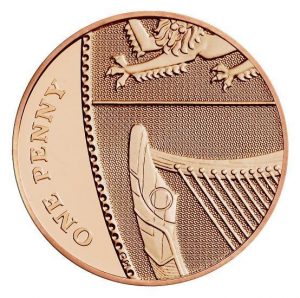
-
The reverse of a 2018 U.K. One Penny coin
-

-
Lincoln Cent Wheat Ears reverse
-
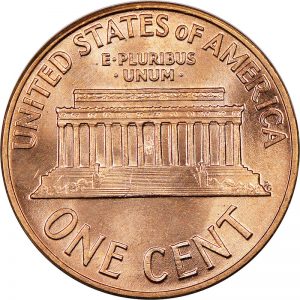
-
Lincoln Memorial Cent
-
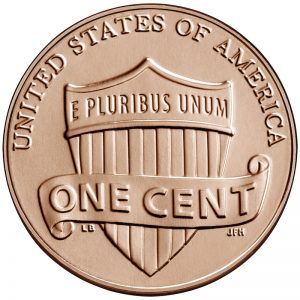
-
Modern Lincoln Shield Cent
Lately, the U.S. Mint has been adding to the confusion by using the word “penny” instead of “cent.” The significant abuser appears to be U.S. Mint Director David Ryder. While previous directors and acting directors have been careful with the name, it seems to have loosened its language since the appointment of Ryder. Ryder should know better since this is not his first appointment to the U.S. Mint.
Adding to the confusion in Parker’s article, he cites statistics in favor of the cent that was compiled by Americans for Common Cents. Americans for Common Cents is a lobbying organization dedicated to preserving the United States’ lowest denomination coin.
According to Parker, “Pennies no longer matter.” If the one-cent coin no longer matters, then why does the U.S. Mint produce over 13 billion of them each year?
The primary client of the U.S. Mint is the Federal Reserve. Every year, the Federal Reserve places an order for the U.S. Mint to produce coins for circulation. Although the order can be updated during the year, the Federal Reserve rarely requests few coins. It means that the U.S. Mint manufactures coin the Federal Reserve will buy.
The U.S. Mint does produce coins for the collector market. But in comparison to their circulating coin production, the numismatic market is tiny.
Naturally, this leads to wondering if the coins no longer matter, then why is the Federal Reserve asking the U.S. Mint to manufacture and deliver over 13 billion coins?
And now the news…

September 22, 2019
Two women have designed a commemorative coin to recognize 100 years since the Boll Weevil monument was erected. Enterprise high school Quarterbacks club secretary Judi Stinnett got the design idea from a coin she received at the Diamond Jubilee over 60 years ago.  → Read more at wtvy.com
→ Read more at wtvy.com

September 22, 2019
The South African Mint Company are doing something a little different to celebrate 25 years of democracy in this country. So what better way to commemorate “power to the people” than by handing them control of what should appear on the new R2 coin?  → Read more at thesouthafrican.com
→ Read more at thesouthafrican.com

September 23, 2019
Nassau County District Attorney Madeline Singas announced that a coin dealer from Fort Salonga was arraigned for a $330,000 cross-country coin consignment and sale scheme that targeted coin dealers and private collectors from California, Michigan, Ohio and Long Island.  → Read more at longisland.com
→ Read more at longisland.com

September 24, 2019
A builder is celebrating after finding a huge haul of 1,000-year-old silver coins worth £50,000 – including one from Lincolnshire which experts have never seen before. Don Crawley, 50, was searching for buried treasure in farmland using his metal detector when he discovered the haul.  → Read more at lincolnshirelive.co.uk
→ Read more at lincolnshirelive.co.uk

September 24, 2019
(Image: © FIRST/Jack Kamen/NASA via collectSPACE.com) The United States Mint will memorialize the first teacher who launched toward space with a new coin that will help continue her mission of science and technology education.  → Read more at space.com
→ Read more at space.com

September 25, 2019
Have only seven red cents to my name and soon a self-description will employ penniless as identification. Not ready for the poorhouse though as poor mouth expressions mean only that all pennies have been removed from jars, drawers and a car console.  → Read more at trentonian.com
→ Read more at trentonian.com

September 26, 2019
AN EXTREMELY rare copper coin marking King Edward VIII's short reign has sold for a record price of £133,000. The Edward VIII 1937 Pattern Penny was created as a trial coin by the Royal Mint ahead of his coronation in the same year.  → Read more at thesun.co.uk
→ Read more at thesun.co.uk

September 26, 2019
Lori Ann Lewis was doing charity work in downtown Orlando when, by chance, she ran into someone who worked in the gold business. It was in the lobby of the Seacoast Bank skyscraper in 2016, just before the presidential election, when she met Susan Kitzmiller, an employee at U.S.  → Read more at orlandosentinel.com
→ Read more at orlandosentinel.com

September 28, 2019
The Bank of Jamaica (BOJ) estimates that at least J$100 million in one- 10- and 25-cent coins, the ‘red’ money, is ‘lost in circulation’ in the Jamaican economy, and has partnered with GraceKennedy (GK) Money Service in a recovery drive.  → Read more at jamaica-gleaner.com
→ Read more at jamaica-gleaner.com
Jun 21, 2019 | cents, coins, fun, video
This one is just for fun.
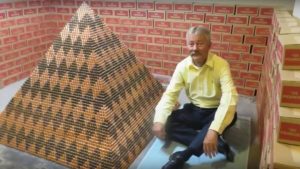
Cory Nelson poses with his World Record creation (screen grab from YouTube)
In an interview with CBC Radio, Nelson said that after building a coin pyramid with 41,000 coins on his desk, his coworkers asked if it was the world’s largest. He said that if it were not, he would make sure it is.
According to the Guinness World Records, the record was 1,000,935 Lithuanian one-cent coin by Vytautas Jakštas and Domas Jokubauskis. The pair built their coin pyramid in 2014 using Lithuanian Litas as a celebration before Lithuania converted to the Euro.
After three years of work on it for 20 hours per week, 45 YouTube videos tracking his work, and 1,030,315 Lincoln cents later (that is $10,303.15 worth of coins), Nelson submitted his creation to become the world records holder. It will take a while for GWR to verify the record.
Here’s the final video of Nelson’s pyramid:
May 11, 2019 | cents, coins, fun
 After I closed up shop, I did my usual after Saturday chores then sat down to count the change in my cash register. As I counted all of those brown and red Lincolns, I noticed the 1859 Copper-Nickel Indian Head cent was gone.
After I closed up shop, I did my usual after Saturday chores then sat down to count the change in my cash register. As I counted all of those brown and red Lincolns, I noticed the 1859 Copper-Nickel Indian Head cent was gone.
I am not sure who received it or if my assistant was the one to make sure it found a new home, but it left without any further discussion.
Unfortunately, I found an 1899 Barber dime in the change along with several 1957-D Lincoln cents. On Monday, I will try to give away the Barber dime.
May 10, 2019 | cents, coins, commentary
 After the fiasco earlier this week when I tried to give away an 1859 Indian Head cent, someone else just rejected the coin.
After the fiasco earlier this week when I tried to give away an 1859 Indian Head cent, someone else just rejected the coin.
It was a busy day, and there were a large number of cash transactions. Since I was not paying attention to the coins I was pulling out of the drawer, I scooped 2-cents to give to someone in change. As I dropped the coins into his hand, I noticed that one was the 1859 Indian Head Cent.
Rather than putting the coins in his pocket, he dropped the two coins into a tray I keep by the cash register.
Since this happened earlier in the afternoon, I left the coin there to see if anyone would notice. Following several more cash transactions, I took the coin out of the tray and dropped it back into the drawer.
It might not be the prettiest Indian Head cent I have seen, but it is still worth about $15-20. And I cannot give it away!
If I cannot give it away on Saturday, it is coming home with me. At least I appreciate its significance in numismatic history.
May 7, 2019 | cents, coins, commentary
 With most of the roll of 1957-D very red Lincoln cents still in my cash register’s draw and the quarter bin even half-full of uncirculated bicentennial quarters, I thought that most of the more expensive and interesting coins made it into circulation. That was not the case.
With most of the roll of 1957-D very red Lincoln cents still in my cash register’s draw and the quarter bin even half-full of uncirculated bicentennial quarters, I thought that most of the more expensive and interesting coins made it into circulation. That was not the case.
A new customer came into the shop and found a few items she wanted to purchase. After selecting a few things, she left to find an ATM because, she said, that she does not like using credit or debit cards. As a reseller of estate and other used items, this is a common practice for many purchases under $100. It is a typical scenario.
After paying for her purchase, she saw that I had given her two very shiny Lincoln cent and one with a beautiful brown color. Except it was not a Lincoln cent. It was an 1859 Indian Head cent that was left over from National Coin Week.
I had included two 1859 Indian Head cents in the draw. This coin was the second that survived National Coin Week. Depending on how you look at the coin, it could grade VG-F making it worth about $15-20.
When she looked at the coin what was different in her hand, she asked what it was. After I explained what it was, she accused me of giving her a counterfeit coin. She insisted it was not real and that I was trying to cheat her.
I walked over to the shelf and grabbed a new copy of the Red Book to show her that it is a real coin and that it has value. But she was not impressed insisting that was scamming her with stuff I did not know. Even after pointing to my name in the list of contributors she would not back down.
Finally, I agreed to change the coin.
As I put the coin back into the cash register drawer and replaced it with one of the 1957-D cents, she stopped me and said that I told her the coin is worth $15-20 and she wanted $20. I reminded her that she thought the coin was bogus, so why should I pay for a fake coin?
After handing her another coin, she looked at it and noticed the wheat ears reverse. While accusing me of trying to cheat her, she asked why am I giving away “phony money?”
I explained that the coin was a bit more modern even though it is a little older than me. Its value is about $5-6. She looked at the coin and compared it to the coins in her purse, ignoring the fact that I had given her two of them earlier.
“The back is funny. Why is the back funny?” she asked.
While explaining about the design and the changes made to the coin, I search the change draw then my pocket for a more modern coin. She gave the 1957-D back, and I replaced it with a brown Memorial-back cent I found in my pocket.
Happy that she has recognizable money, she walked out threatening to call the police. As I held the door for her, I said that she should contact the U.S. Secret Service because they are responsible for dealing with counterfeiters.
I wished her a good afternoon.
My new and former customer left without saying another word.
Apr 18, 2019 | cents, coins
Although I am still searching for a quarter with a W mintmark in my change, it does not mean I am not finding anything. Today’s find was not in change but from the bottom of a box.
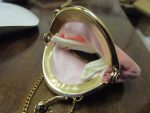
Peering inside the little purse we see the coin

Little Pink Doll Purse found in a box
A few months ago, a client delivered dolls and other collectibles they did not want to take on their move across the country. We sold most of the collectibles and moved on. But this little purse found something in the box to attach itself to and stayed behind.
I opened the purse to find a little handkerchief and a penny. How cute, I thought, they put a penny in the doll’s handbag. The edge of the coin showed a distinctive red color and wondered about the year. Considering that most of the toys were from the 1990s, I was expecting to see a period coin.
Imagine my surprise when I removed the coin and found it was a 1907 Indian Head cent. The red colored coin has signs of toning on the obverse, likely from being stored in the purse with a little cotton hankie. The coin looks like it has never been in circulation.
I am not a fan of toned coins, but this one is light enough to enhance the red coloring of the coin rather than being a different color.
The images of the coin do not do it justice. I should have taken the picture on a white background and away from fluorescent lights. But I wanted to send the picture to someone who might be interested in the coin.
If that person does not buy the coin, I may take the chance to send it to a grading service. I think it could probably grade MS64-RD. It is such a pretty coin that it is worth the risk. After all, mint state Indian Head cents graded as red-brown start at $40. I cannot lose!
Mar 29, 2018 | cents, coins
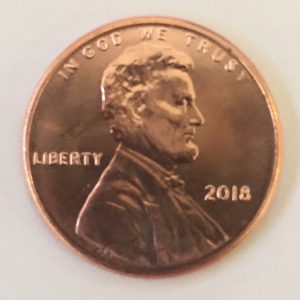 While looking through my change at the end of the day I finally found one… a coin dated in 2018!
While looking through my change at the end of the day I finally found one… a coin dated in 2018!
During the day I had business in the Jessup, Maryland area where stops included one for gas and a beverage. I suspect that the bright red 2018 Lincoln Cent I found in my pocket was given in change during the purchase.
Now that I have found a 2018-dated coin, let’s see how long it takes to find a 2018 America the Beautiful quarter. Thus far, only the Pictured Rocks National Lakeshore (MI) Quarter has been released but I have not seen one in circulation, yet.
Stay tuned!
Nov 24, 2017 | cents, coins, dollar, fun, halves, nickels, state quarters
 What would it take to put together a modern type set?
What would it take to put together a modern type set?
How would you define a modern type set?
This is the summary of the email conversation I have been having with someone looking for an interesting challenge to work on with his children.
For new readers and those new to numismatics, a type set is one coin of every type regardless of date or mintmark. Although some coins have one-year types, like the 50 State Quarters, there are others where one coin will represent an entire series, like the Roosevelt Dime.
While there are a lot of interesting coins types we focused on modern coins. Modern coins are those struck since 1965 when coins went from silver to copper-nickel except for the Kennedy half-dollar that was made of 40-percent silver through 1970. To budding young numismatists, modern coins are all they know.
In fact, all they know is that the quarter has a constantly changing reverse and they have seen differences in the Lincoln cent and the Jefferson nickel. They did not go through the fiasco of the Susan B. Anthony dollar or marvel at the first circulating commemoratives of the modern era: the dual-dated bicentennial coins. They were not around to search boxes of Cheerios for the new Sacagawea dollar coin or the millennial cent.
-
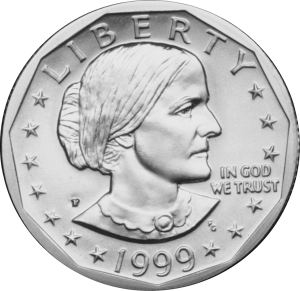
-
Obverse of the Susan B. Anthony Dollar
-

-
The 2000 Cheerios Dollar
Modern coins do not get the same love as some of the classics. Aside from not containing silver, there have been controversies over designs (see the “spaghetti hair” that George Washington was sporting on the 50 State Quarters) and how the relief on coins has been lowered by the U.S. Mint in an attempt to extend die life.
Some not-so-great designs
-

-
Obverse of the 50 State Quarters with Washington’s spaghetti hair
-
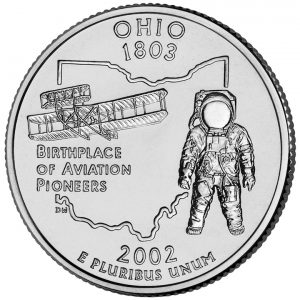
-
2002 Ohio Quarter with the hanging astronaut
-
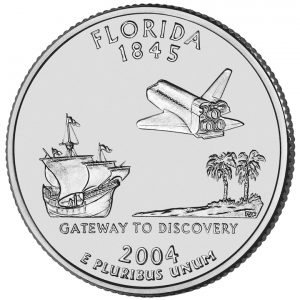
-
2004 Florida Quarter with a jumble of stuff
Although people love the classic designs two of my favorite designs of the modern era is the Drummer Boy reverse on the Bicentennial quarter and the Thomas Jefferson portrait on the obverse of the 2005 Westward Journey nickels. And even though I have not written much about them, there are some fantastic designs in the America the Beautiful Quarters series. A few that you may want to take a second look at include 2017 Ellis Island, 2017 George Rogers Clark National Historic Park, 2016 Shawnee National Forest, and the 2015 Blue Ridge Parkway quarters just to name a few.
A few of the great America the Beautiful Quaters designs
-
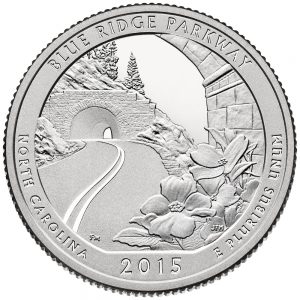
-
2015 Blue Ridge Parkway – North Carolina
-

-
2016 Shawnee National Forest – Illinois
-

-
2017 Ellis Island – New Jersey
-
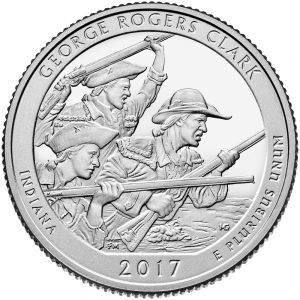
-
2017 George Rogers Clark National Park – Indiana
Sitting with a Red Book, I started to list the coin types that would make up a modern type set. If we limited the set to circulating coins (e.g., not including half-dollars and one-dollar coins) that can be found in pocket change, there would be 128 coins with a face value of $28.97.
| Type |
No. in Series |
Face Value |
Series Value |
| Lincoln Memorial Cents |
2 |
0.01 |
0.02 |
| Lincoln Bicentennial Cents |
4 |
0.01 |
0.04 |
| Lincoln Shield Censt |
1 |
0.01 |
0.01 |
| pre-2004 Jefferson Nickels |
1 |
0.05 |
0.05 |
| Westward Journey Nickels |
4 |
0.05 |
0.20 |
| Return to Monticello Nickels |
1 |
0.05 |
0.05 |
| Roosevelt Dimes |
1 |
0.10 |
0.10 |
| Washington Quarters |
1 |
0.25 |
0.25 |
| Bicentennial Quarters |
1 |
0.25 |
0.25 |
| 50 State Quarters |
50 |
0.25 |
12.50 |
| D.C. and U.S. Territories Quarters |
6 |
0.25 |
1.50 |
| America the Beautiful Quarters |
56 |
0.25 |
14.00 |
| Total |
128 |
1.53 |
28.97 |
The above table does take into consideration the entire 56 Amercia the Beautiful Quarters series including future issues. The kids have to understand the concept of future issues and maintain space for these coins in their album.
Starting the set with pocket change allows the kids to get used to the concept of looking at the coins to understand what they are looking for. To help with their search each child was given a Red Book and two apps on their iPads: PCGS CoinFacts and PCGS Photograde. They can use the Red Book as a handy off-line reference but use PCGS CoinFacts to learn more when they have access. Photograde is very useful to help them assess the condition of the coins.
While collectors have a basic understanding of coin grading, getting it right can be difficult. These kids were given a basic lesson on things to look for when trying to assess the condition of the coins they find. It will be interesting to see how they interpret this information.
Once we covered coins that can readily be found in circulation, we then discussed the other business strikes that are usually not found in ordinary pocket change.
After an interesting discussion, it was decided to make those a separate collection.
As a separate collection, this will give the kids an opportunity to go to dealers and coin shows to allow the kids to learn about buying coins in this environment. They will learn how to talk with a dealer, gain experience negotiating, and do some comparison shopping. It will let them get the experience and see different coins but maintain a collection discipline that will allow them to learn to collect on a budget.
What are the modern type coins that do not see a lot of circulation? Once again, I sat with the Red Book and came up with the following list:
| Type |
No. in Series |
Face Value |
Series Value |
| Kennedy Half Dollars |
1 |
0.50 |
0.50 |
| Bicentennial Kennedy Half Dollar |
1 |
0.50 |
0.50 |
| Eisenhower Dollars |
1 |
1.00 |
1.00 |
| Bicentennial Eisenhower Dollars |
2 |
1.00 |
2.00 |
| Susan B. Anthony Dollars |
1 |
1.00 |
1.00 |
| Sacagawea Dollars |
1 |
1.00 |
1.00 |
| Native American Dollars |
11 |
1.00 |
11.00 |
| Presidential Dollars |
39 |
1.00 |
39.00 |
To complete the task, I came up with a checklist for all of the modern coins in two formats. One is a printed version that they could keep in their pocket as they go about their day. The other is a spreadsheet that can act as an official record. The paper version is a very basic PDF file that can be used to write notes. The spreadsheet offers more information. It also allows them to come up with their own catalogue.
Both files are attached for you to use (see the Creative Commons Attribution-NonCommercial-ShareAlike 4.0 International License for text of the permissions granted with this release).
It will be interesting to see what these kids do!
Checklists
Modern Coinage Type Set Checklist
Modern Coin Type Set Detailed Checklist
 → Read more at kafkadesk.org
→ Read more at kafkadesk.org
 → Read more at thehansindia.com
→ Read more at thehansindia.com
 → Read more at presstv.ir
→ Read more at presstv.ir
 → Read more at the-sun.com
→ Read more at the-sun.com
 → Read more at poncacitynow.com
→ Read more at poncacitynow.com

 It is not a surprise to economic and market watchers that there is a perceived coin shortage. The problem is not just in the United States, but worldwide central banks are trying to fix their circulation issues.
It is not a surprise to economic and market watchers that there is a perceived coin shortage. The problem is not just in the United States, but worldwide central banks are trying to fix their circulation issues.






 With most of the roll of 1957-D very red Lincoln cents still in my cash register’s draw and the quarter bin even half-full of uncirculated bicentennial quarters, I thought that most of the more expensive and interesting coins made it into circulation. That was not the case.
With most of the roll of 1957-D very red Lincoln cents still in my cash register’s draw and the quarter bin even half-full of uncirculated bicentennial quarters, I thought that most of the more expensive and interesting coins made it into circulation. That was not the case.

